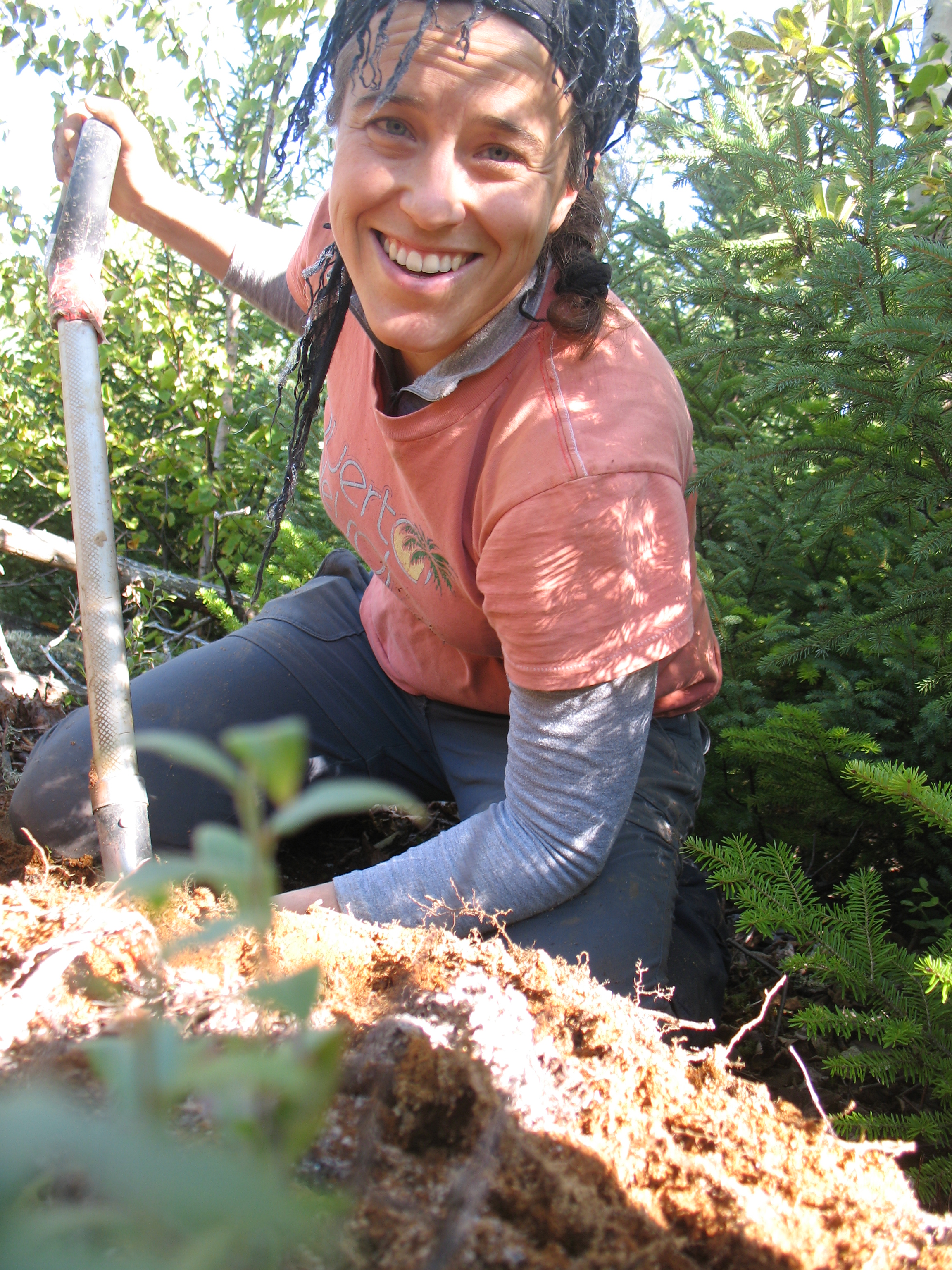 Karine Tache
Karine Tache|
I am an anthropological archaeologist
with a research focus on the prehistory of the Eastern Woodlands. More
specifically my research addresses social developments that marked the beginning
of the Woodland period (3000-2400 B.P.), such as the creation of extensive
interaction networks and the innovation of pottery.
Prehistoric exchange: I am fascinated by interactions between societies and the potential for culture contact to stimulate social development and complexity. My doctoral dissertation contributed to better understanding the structure and regional diversity of the Meadowood Interaction Sphere in North Eastern North America. I argued that, under certain ecological conditions, the attempt by certain individuals or corporate groups to enhance their status through privileged access to rare goods was central in maintaining cross-cultural contacts. In future projects, I wish to further this theoretical standpoint to enhance our understanding of emerging social complexity beyond the Eastern Woodlands of North America Early pottery and organic residue analysis: In addition to the creation of vast interaction spheres, the Woodland period witnessed the adoption of ceramic technology. My recent work has focused on these early vessels and the range of potential incentives, both social and functional, behind this important technological innovation. To answer some of my research questions on early pottery, I gained a technical expertise in organic residue analysis of archaeological ceramics at the University of York in the UK. Indeed knowing what was processed in pottery provides one of the strongest indications of why it was used. I am a member of the Early Pottery Research group, a multi-national research organization investigating the origins of pottery use using biomolecular and microscopic techniques (http://www.earlypottery.org). The analysis of organic residues using gas-chromatography/mass spectrometry and other analytical techniques is a very promising research avenue in pottery studies and I am currently setting up an organic residue laboratory at Queens College to contribute to this growing field of study. |
Research
Focus:
Courses Taught:
|
Taché, K., M. Bondetti, A. Lucquin, M. Admiraal, and O.E. Craig (2019) Something fishy in the Great Lakes? A reappraisal of early pottery use in north-eastern North America. Antiquity.
Leclerc, M., K. Taché, S. Bedford, and M
Spriggs (2019). Organic residue analysis and the role of Lapita pottery. In:
Leclerc M. and Flexner J. (eds.). Archaeologies of Island Melanesia: current
approaches to landscape, exchange and practice, pp. 179-189. Terra Australis. Canberra, Australia.
Taché, K. (2018) Breaking lipids to enrich the past: looking up to the next 50 years of
organic residue analysis. Canadian Journal of Archaeology 42:124-136.
Hart,
J., W. Lovis, and K. Taché (2018) Freshwater reservoir offsets and food
crusts: Isotope, AMS, and lipid analyses of experimental cooking residues.
PLoS ONE. doi: 10.1371/journal.pone.0196407
Leclerc, M., K. Taché, and O. Craig (2018)
The use of Lapita pottery: Results from the first analysis of lipid residues. Journal of
Archaeological Science 17:712-722.
Taché, K., A. Burke, and O. Craig (2017) From
molecules to clay pot cooking at
the Archaic-Woodland transition: A glimpse from two sites in the Middle St. Lawrence
valley, QC. Canadian Journal of Archaeology 41:139-164.
Taché, K., and O. Craig (2015) Cooperative harvesting of
aquatic resources triggered the beginning of pottery production in
Northeastern North America. Antiquity 89(343):177-190.
Taché, K.,
and O. Craig (In press) Cooperative harvesting of aquatic resources triggered the beginning of
pottery production in Northeastern North America. Antiquity
89(343).
Farrell, T.F.G., P. Jordan, K. Taché, A. Lucquin, K. Gibbs, A. Jorge, K. Britton, O. E. Craig, and R. Knecht (2014) Specialized processing of marine resources in Arctic ceramic vessels? A lipid residue analysis of pottery sherds from the Yup’ik Eskimo site of Nunalleq Alaska. Arctic Anthropology 51(1):86-100.
Craig O.E, Saul H., Lucquin A., Nishida, Y., Taché, K., Clarke, L., Thompson, A., Altoft, D., Uchiyama, J., Ajimoto, M., Gibbs, K., Isaksson, S., Heron C.P., Jordan, P. (2013) Earliest evidence for pottery use. Nature 496(7445):351-354. Contribution: I carried out the lipid analysis and assisted in writing the paper.
Taché, K.,
and J.P. Hart (2013) Chronometric Hygiene of Radiocarbon Databases for Early Durable Cooking
Vessel Technologies in Northeastern North America. American Antiquity 78(2):359-372.
Taché, K., (2011b) New Perspectives on Meadowood Trade Items. American Antiquity 76(1):41-79.
Burley, D., K. Taché, M. Purser, and J. Balenaivalu, (2011) An Archaeology of Salt Production in Fiji. Antiquity 85(327):187-200.
Burley, D.,
A. Barton, W.R. Dickinson, S.P. Connaughton and K. Taché, (2010) Nukuleka as a Founder Colony for West Polynesian
Settlement: New Insights from Recent Excavations. Journal of Pacific Archaeology 1(2): 128-144.
Connaughton, S.P., K. Taché and D.V. Burley, (2010) Taupita: A 3000 Year Old Shell Game in the Lapita Cultural Complex of Tonga. Journal of Social Archaeology 10(1): 118-137.
Taché, K., D. White and S. Seelen
(2008) Potential Functions of Vinette I Pottery. Complementary Use of
Archaeological and Py-GC/MC Data. Archaeology
of Eastern North America 36: 63-90.
Taché, K. (2005) Explaining Vinette I Pottery Variability: The View from the Batiscan Site, Québec. Canadian Journal of Archaeology 29(2): 165-233